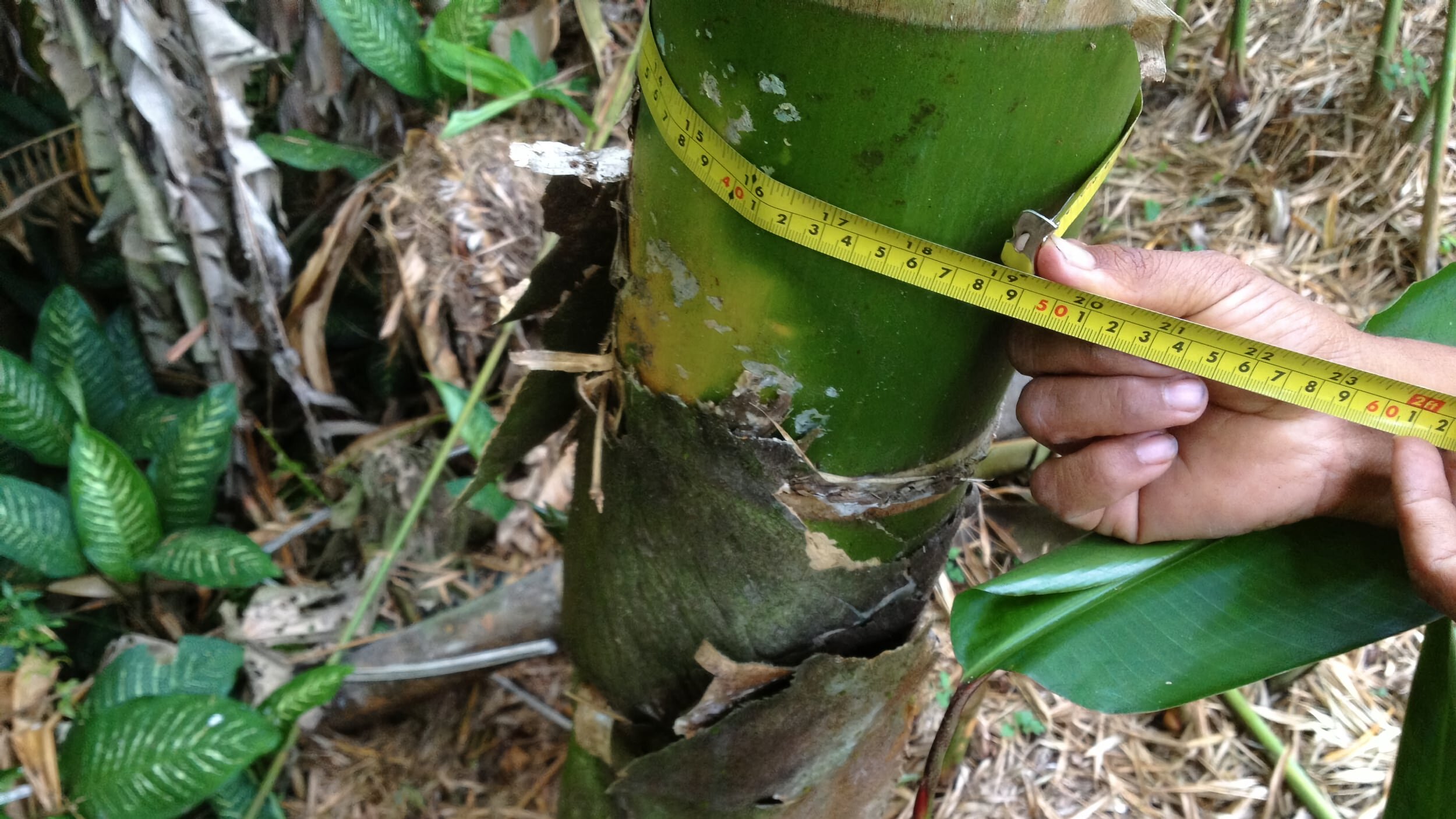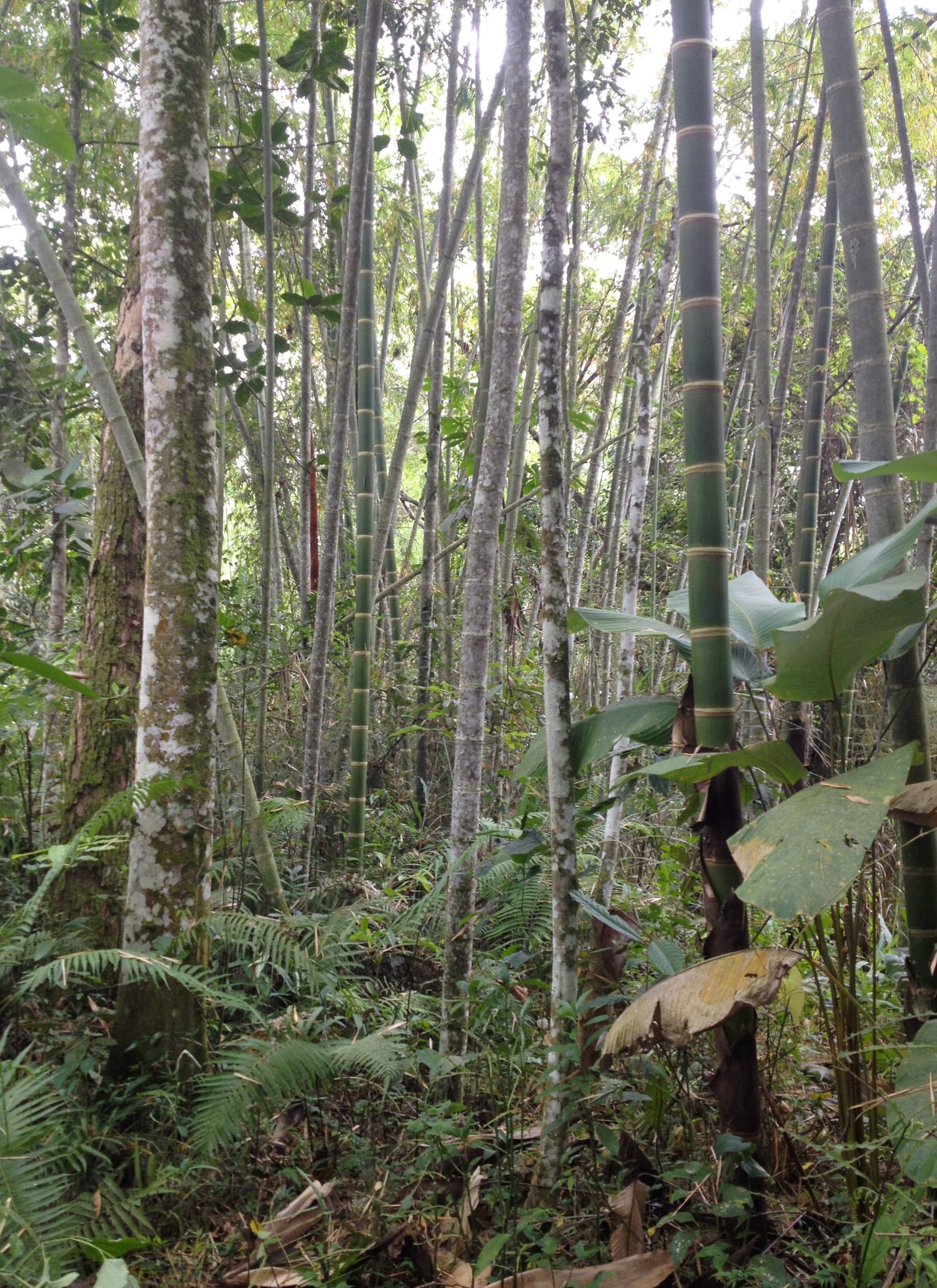
Dark Spots on Guadua Bamboo
Why do some Guadua bamboo poles have dark spots? The exact cause for dark spots on the outer layer of Guadua Bamboo poles are yet unknown. What is certain is that these stains origin from lichens.

How to Determine the Height of a Bamboo Culm?
Is it possible to determine the approximate height of a bamboo culm by measuring its girth or diameter? Absolutely! In fact, bamboo is the only plant that exhibits a direct mathematical relationship between the circumference of its culm and both the internode length and overall height.

What are the Different Types of Bamboo?
Scientifically speaking there are 3 types of bamboo (tribes), which consist out of herbaceous bamboos (Olyreae), tropical woody bamboos (Bambuseae) and temperate woody bamboos (Arundinarieae). Altogether they contain 1,718 species which are categorized into 128 genera.

Where does Bamboo Grow?
Bamboo grows native on 5 continents: Africa, Asia, South America, North America and Australia. In other words, all continents except for Antarctica and Europe have native bamboos. Coincidentally, all continents except Antarctica and Europe have diamonds.

Is Bamboo a Tree? Science vs Politics.
Scientifically speaking bamboo is undoubtedly grass, but in terms of legislation, bamboo is often classified as a tree. Find out why correct classified can avoid major legal, economic, and environmental implications.

How Durable is Bamboo?
Without any protective treatment, most bamboo species have an average natural durability of less than 2 years. Stored under cover, untreated bamboo may last 4-7 years.
